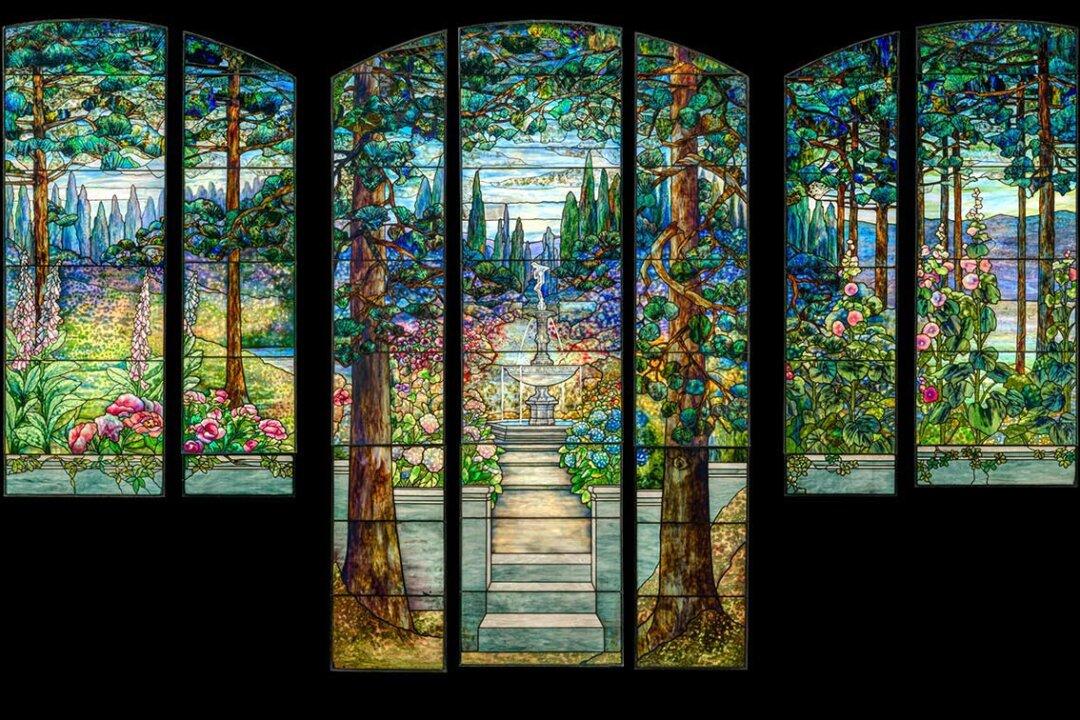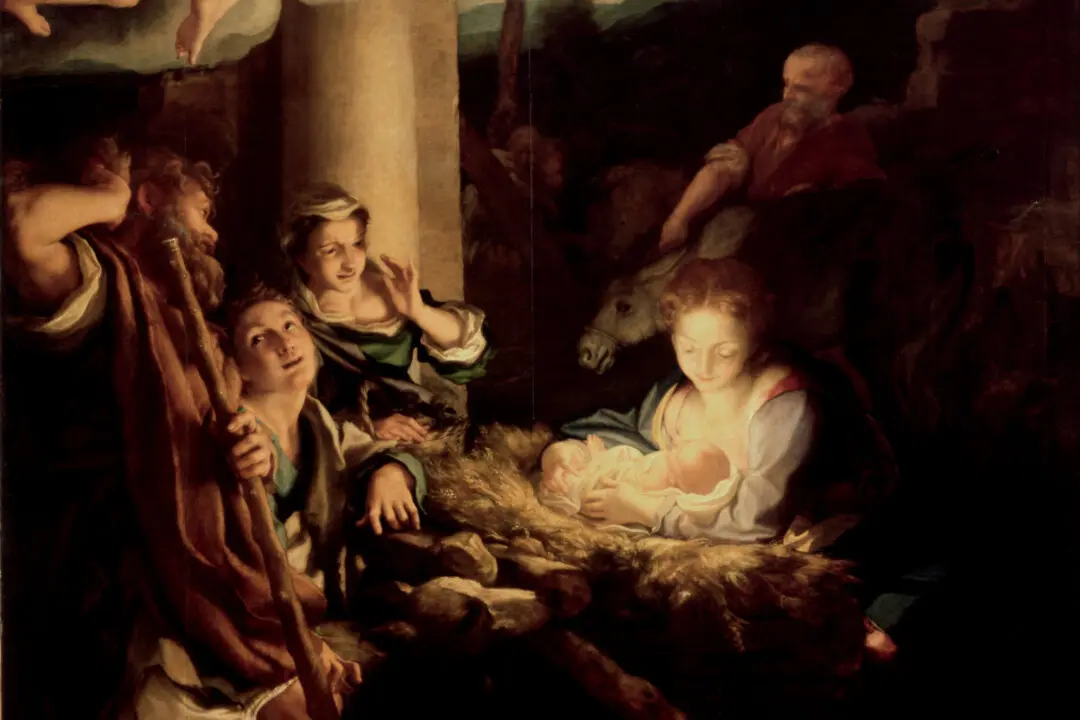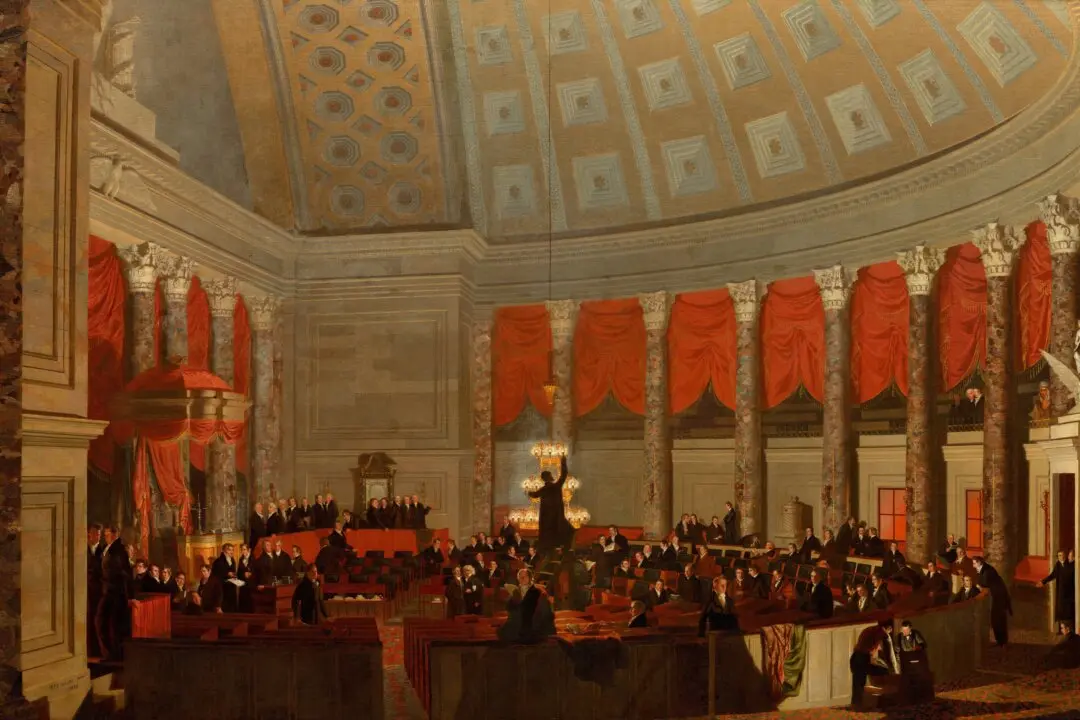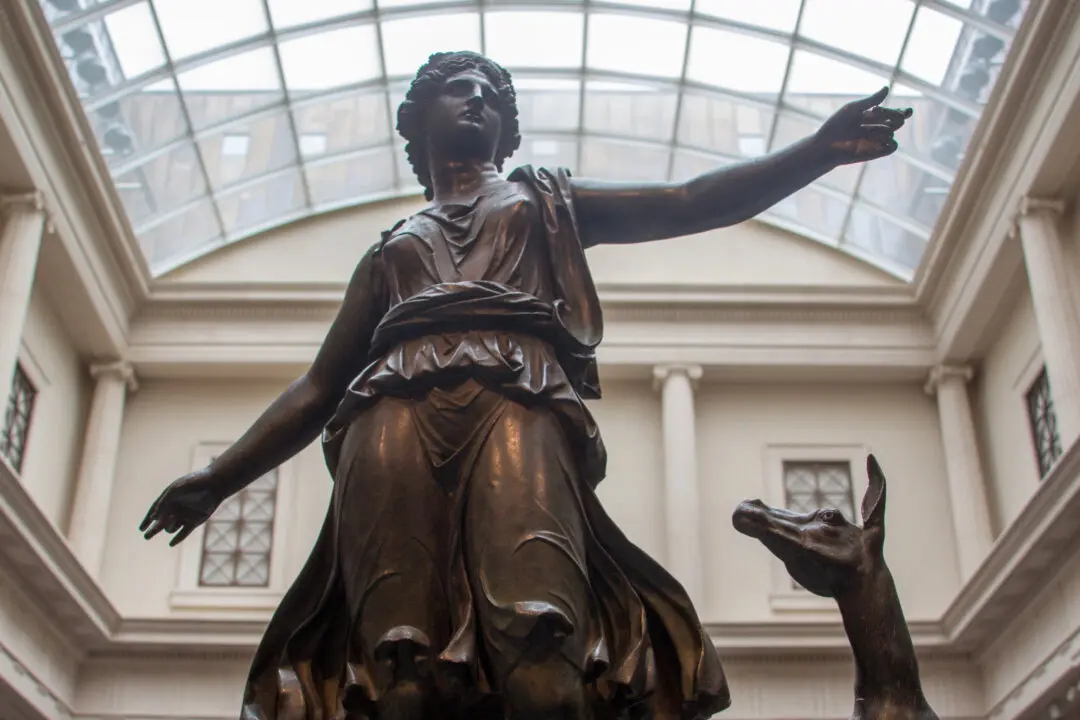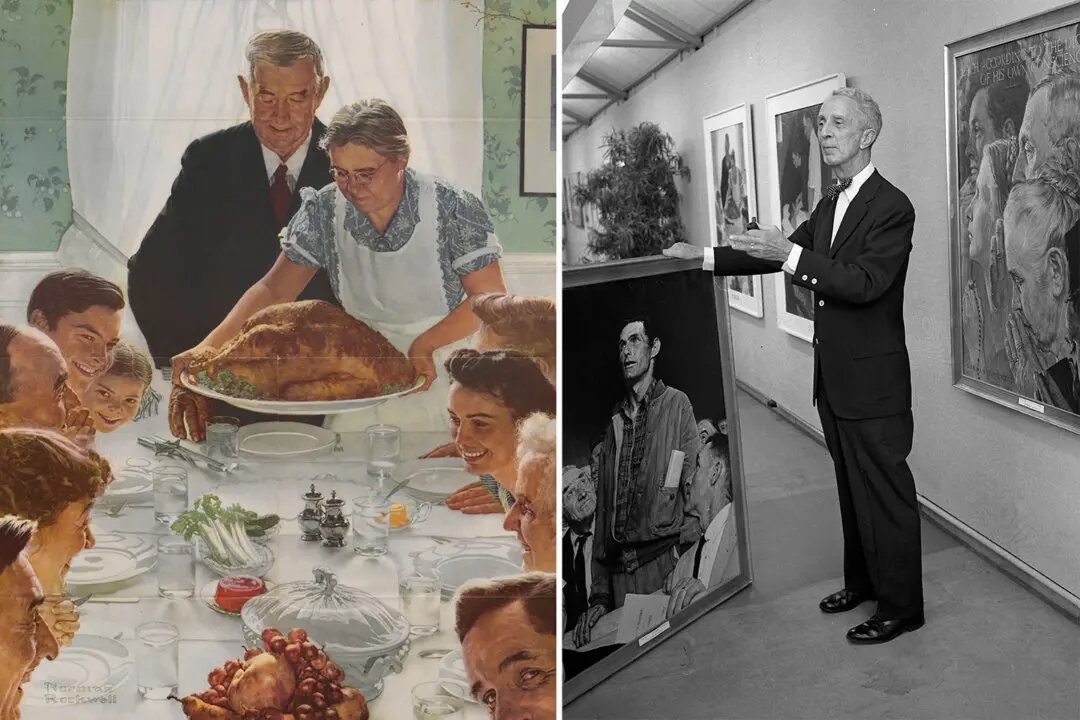There is a new garden at the Metropolitan Museum of Art! It features flowers in season from spring through summer, but they are always in bloom.
This feat is achievable because the flowers are made of glass, specifically Favrile glass. They’re the decorative motifs in a monumental stained-glass window. The window manufacturer was the American company Tiffany Studios, led by the great Louis Comfort Tiffany, but the origin of this window tells a previously overlooked story about remarkable women.

